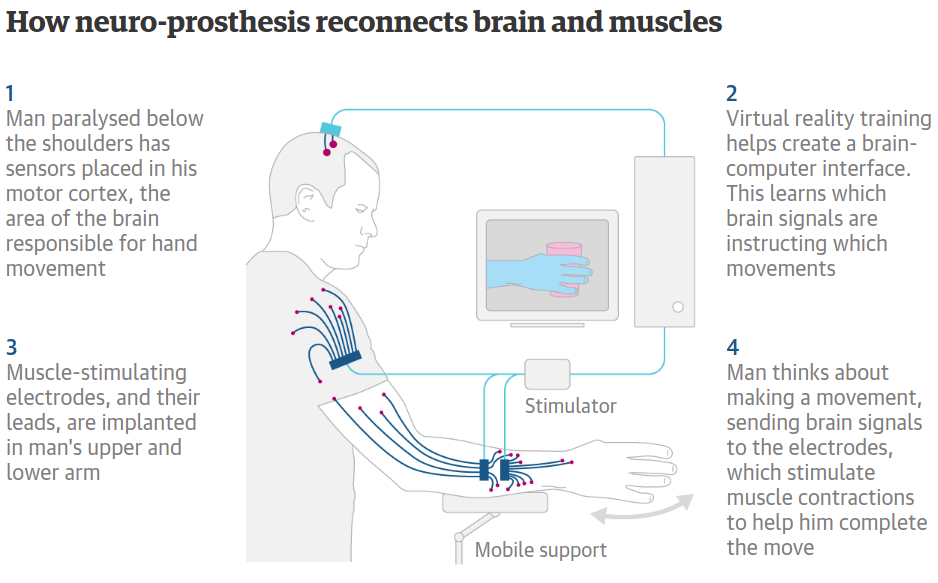A paralyzed man in Cleveland can feed himself for the first time in eight years, aided by a computer-brain interface that reads his thoughts and sends signals to move muscles in his arm. [1]
Earlier this year, researchers at Case Western Reserve University and Brown University published a study in The Lancet that described the new technology, an example of a neuroprosthetic. [2]
The U.S Army veteran Bill Kochevar, now 56, is paralyzed below the shoulders since he suffered a major spinal cord injury in a 2006 bike accident. [3]
Kochevar’s breakthrough was led by BrainGate (a privately-held firm focused on the advancement of the BrainGate™ Neural Interface System) and other several institutions, including U.S. Department of Veterans Affairs.

The significant feature of the Kochevar experiment is that it bypasses the damaged spinal cord to directly connect the brain with target muscles. [4]

Kochevar’s newfound movement is the result of two surgeries, physiological training and a lot of engineering. The patient had to train by first watching a virtual representation of his arm doing certain movements. When he tried moving his arm the same way, the resulting brain activity was recorded. The recording served as the basis for a decoding system that would translate his intentions into commands for his arm electrodes.
During the experimental therapy, electrodes implanted under Kochevar’s skull were connected via cables to electrodes implanted in the muscles of his arm. The two technologies worked together to allow Kochevar’s brain to send signals to his paralyzed muscles, enabling them to move.

Kochevar’s newfound movement is the result of two surgeries, physiological training and a lot of engineering. The patient had to train by first watching a virtual representation of his arm doing certain movements. When he tried moving his arm the same way, the resulting brain activity was recorded. The recording served as the basis for a decoding system that would translate his intentions into commands for his arm electrodes.

The BrainGate system used by Mr Kochevar was developed more than ten years ago, but only a handful of people have tried it out. Turning implants into consumer products is a difficult process.
References
[1] https://www.reuters.com/article/us-health-computer-arm/brain-implant-lets-paralyzed-man-feed-himself-using-his-thoughts-idUSKBN16Z31Y
[2] http://www.thelancet.com/journals/lancet/article/PIIS0140-6736%2817%2930601-3/abstract
[3] https://www.cleveland.com/metro/index.ssf/2017/03/braingate2_implants_allow_paralyzed_cleveland_veteran.html
[4] http://now.northropgrumman.com/paralysis-treatment-set-to-be-revolutionized-with-neuroprosthetics/
